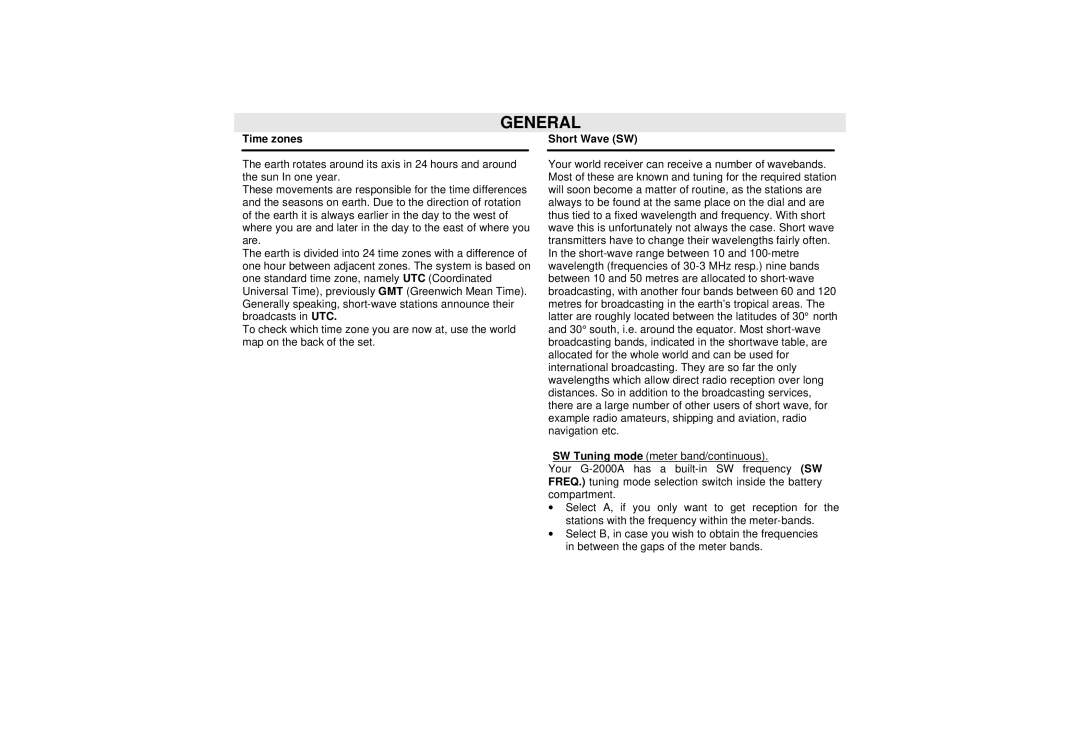G2000A specifications
The Grundig G2000A is a notable piece of technology from the 1970s, representing a significant contribution to portable radio communications. Known for its compact design yet powerful features, it became a favorite among radio enthusiasts and professionals alike.One of the standout features of the G2000A is its multi-band capability, which allows users to tune into different frequencies across the LW, MW, SW, and FM bands. This diversity means that listeners can access a wide array of stations, from local broadcasts to international programming, making it ideal for both casual listening and global news updates.
The Grundig G2000A includes a built-in analog tuner that is both sensitive and selective, ensuring clear reception even in challenging conditions. This is complemented by a quality speaker that delivers crisp audio output, enhancing the listening experience for news, music, or emergency broadcasts. Additionally, the radio features a unique built-in telescopic antenna that improves signal strength and clarity, a hallmark of portable radios of its time.
In terms of design, the G2000A is compact and portable, making it easy to carry on outdoor adventures or travels. The robust build quality ensures durability against the rigors of various environments, while the classic aesthetic appeals to vintage radio collectors.
Another important characteristic of the G2000A is its power versatility. It can operate on both AC mains and batteries, providing flexibility for different usage scenarios. This feature is particularly valuable for those who use the radio in remote locations where electricity may not be readily available.
Furthermore, the radio's user-friendly interface consists of clearly labeled dials and buttons, making it accessible for enthusiasts of all ages. With its retro style, it also has garnered interest from collectors seeking to own a piece of audio history.
Overall, the Grundig G2000A is a well-rounded portable radio, combining essential features, robust performance, and timeless design. Its blend of technology and practicality reflects the golden age of radio and continues to resonate with modern users who appreciate quality craftsmanship and functionality.
